If I sell to other businesses, paid search feels simple on paper and fuzzy in practice. I want control, speed, and numbers that justify the spend. That’s why I keep answering the same question: should I bid on branded keywords or let organic handle it? Short answer: in most B2B setups, I run a measured brand defense that earns low-cost, bottom-funnel clicks and keeps my message in front of buyers. The twist is knowing when to hold back and how to prove incrementality without burning budget.
Should I bid on branded keywords?
Usually yes - when I’m defending high-intent traffic and CPCs are low, the wins are control and ROI. I protect my name on the page, shape what people see, and convert searchers who are already close to yes. Still, there are exceptions, so I use a simple evaluation:
- Budget is tight and brand CPCs are above my non-brand average: I defer or run a lite defense.
- Competitors or aggregators are present on my name or product lines: I defend.
- Brand query volume is growing and organic isn’t consistently in position one with rich sitelinks: I defend.
- There’s zero competitor pressure, I own position one with sitelinks, and most brand clicks skew to support or careers: I defer or keep a lite defense.
A quick setup that doesn’t need babysitting:
- I start with exact match for my core brand, product names, and high-intent modifiers (pricing, demo, free trial, contact).
- I set a modest daily cap tied to sales-qualified lead (SQL) targets, not vanity clicks.
- I use sitelinks to route bottom-funnel traffic fast (Pricing, Case Studies, Industries, Enterprise, Contact, Security). For more on assets, see ad extensions.
- I add negatives out of the gate: jobs, careers, login, support, help, phone number, headquarters.
KPI benchmarks I typically expect (your mileage will vary by industry, brand strength, and SERP competition):
- Branded CTR: 35% to 60% on search, often higher on desktop.
- Quality Score: 8 to 10 when ad copy and landing pages mirror brand intent. According to WordStream, a good Quality Score for branded keywords is between 8 and 10.
- CPC: commonly 60% to 90% lower than non-brand.
- Blended CPA per SQL: tracked in GA4 or a CRM, compared to non-brand and paid social. Tools like ConversionIQ can help monitor incrementality and performance.
- Branded impression share: 80% to 95%, unless a bidding war depresses coverage.
- Incrementality: proven via a geo split or time-based holdout that measures net lift in conversions and SQLs, not just clicks.
What branded keywords are and why they matter in B2B
Branded keywords are searches that use my company or product name (including close variations and misspellings). In B2B, they’re often navigational or bottom-funnel, for example:
- [Brand] pricing, [Brand] demo, [Brand] integration, [Brand] reviews, [Brand] security, [Brand] case studies, [Brand] vs [Category].
Brand vs. non-brand, in plain terms:
- Brand terms include my name or product identifiers people associate with me.
- Non-brand terms describe the problem or category without naming me.
- Trademarked terms are my legal property; on most ad platforms, competitors can bid on trademarks in many regions but can’t misuse protected marks in ad copy that violates policy. If misuse happens, I pursue trademark complaints with the platforms and use resources that explain how to mitigate your competitors bidding on your brand.
The B2B nuance: many brand searches come from committees doing due diligence. That’s why high-intent sitelinks and conversion-ready landing pages matter.
Benefits I consistently see from brand bidding
- Defend SERP real estate from competitors and aggregators. Paid plus organic occupies more space and keeps my narrative on top.
- Higher CTR and Quality Score. Relevance is obvious, which lifts ad rank and reduces cost.
- Cost-effective CPCs. I’m the most relevant answer for my name, so I usually pay less to win.
- Message control with ad assets. Responsive Search Ads, sitelinks, callouts, and structured snippets let me surface the proof points buyers want. See how ad extensions add information that improves performance.
- Better funnel routing. Pricing seekers go to pricing, demo seekers hit a fast form, procurement lands on security or compliance.
- Cleaner attribution and query data. I see the exact modifiers people use; that informs copy, onboarding, and sales talk tracks.
- Brand safety and crisis control. Positive messaging sits above noise or negative chatter.
- Promotions and launches. I can change ad copy instantly during a campaign, rebrand, or live event.
I connect branded ads to landing pages built to convert, not a generic homepage. I keep navigation light, restate the value prop quickly, and add proof fast:
- Social proof: case study highlights, customer counts, third-party rating badges.
- Risk reducers: security certifications (e.g., SOC 2), privacy commitments.
- Clear next step: book a demo, schedule a consult, or request pricing.
I also A/B test your landing pages and ad copy. For evidence, see this Instapage experiment showing focused landing pages outperforming homepages for branded search.
Drawbacks and how I test for cannibalization
- Potential organic cannibalization. Some paid clicks would have gone to organic anyway. I fix this with testing, not guesswork. I run a geo split or a time-based holdout and track net lift in SQLs, pipeline, and revenue - not just traffic.
- Paying for non-buying searches. I add negatives for jobs, careers, login, support, phone, address, hours, refund. I route service intent to help-center content via organic or non-paid paths.
- Low-competition cases. If nobody is bidding on me and I already sit in position one with rich sitelinks, I run a lite defense or pause to re-evaluate monthly.
- Legal or trademark constraints. If my legal team restricts how the name appears, I align early, document rules, and lock naming conventions.
- Affiliate or channel conflicts. If partners run brand ads, CPCs can creep and tracking blurs. I set UTM and territory standards, assign impression share targets, and monitor overlap.
How I test cannibalization well:
- Geo split: I choose balanced regions (similar demand and sales coverage). Brand ads stay on in the test set and off in the control set for 3–4 weeks. I compare SQLs, pipeline, and revenue.
- Time-based: I alternate brand on and off in week blocks while holding all else constant.
- Controls and caveats: I account for seasonality, events, and other brand spend (PR, social, display). I keep budgets stable during the test, avoid end-of-quarter anomalies, and size the holdout so sales risk is acceptable.
- What I watch: not just clicks. I monitor conversion rate, average deal size, sales cycle time, and assisted conversions. If brand ads improve downstream outcomes, that matters.
When I lean in vs. hold back
I lean in when:
- Competitors or aggregators are conquesting my name. Here’s more context on competitors bidding on your brand name.
- I’m rebranding or launching products and need to control the story.
- There’s SERP clutter from review sites, directories, or third-party articles.
- Organic coverage is weak (new site, migration, or volatile rankings).
- I’m supporting ABM pushes, renewals, procurement checks, or multi-location routing.
I hold back or limit spend when:
- Competitive pressure has been near zero for months, not days.
- I own position one organically with rich sitelinks that already cover pricing, demo, and contact.
- I’m triaging budget to higher-return non-brand growth where marginal dollars produce more pipeline.
- Branded CPCs rise due to affiliates or channel conflict; I fix governance first.
- Support or career intent dominates brand traffic.
Budget and structure I start with (then calibrate to unit economics):
- Allocation: 5% to 15% of total search spend if brand CPCs are below 1.50 and impression share stays above 80%. I scale to SQL yield and marginal CAC, not comfort.
- Match types: I begin with exact; I add phrase once query data shows clean intent. I avoid broad for brand.
- Ad groups by intent: brand-only, brand + pricing, brand + demo, brand + integration.
- Lite defense model (when I want coverage without overspend): exact match on core brand, conservative bids and daily caps targeting 60%–70% impression share, only high-intent modifiers, and aggressive negatives elsewhere.
If competitors bid on my brand
Here’s how I keep control without starting a bidding spiral:
- Improve ad relevance and Quality Score. I put the brand in headlines and paths, match the landing page headline to the query, and load proof above the fold. Page speed and mobile-friendly forms move the needle more than most teams expect.
- Cover exact and phrase for brand and high-intent modifiers to capture close variants without bloating spend.
- Use sitelinks, callouts, and structured snippets to highlight SLAs, integrations, security, and deployment timelines.
- Set impression share targets or use target outranking share with a cap so I don’t escalate into an arms race.
- Trademark protection. If a rival misuses my trademark in ad copy, I file a complaint through platform trademark policies and keep documentation handy. Learn how to mitigate your competitors bidding on your brand.
- Credibility at scale. I use ad customizers (e.g., feed-based ratings, customer counts, or category logos) so proof stays fresh without manual edits.
- Keep conquesting separate. If I target competitor terms, I run a separate campaign and expect higher CPAs. I never mix those with brand or I’ll blur my numbers.
I keep intent clean. Brand campaigns catch buyers who already know me. Competitor campaigns are a different game with different targets.
The takeaway and concise FAQs
Default to a measured brand defense for control and low-cost conversions. Prove incrementality with a real test, not gut feel. Scale or pause based on data, not habit - and keep an eye on downstream outcomes, not just clicks.
- Should I create a branded campaign if I don’t have many competitors?
I usually run a light, exact-match setup with a small cap to catch high-intent modifiers like pricing and demo. If costs creep or clicks skew to support, I pause and monitor monthly. - How much should I spend on brand terms each month?
A practical starting range is 5%–15% of search budget if CPCs are below 1.50 and impression share is 80%–90%. I scale to SQL volume and marginal CAC, not click volume. - Will brand ads hurt my organic clicks?
Some cannibalization is normal. I run a geo or time-based holdout and measure net lift in SQLs, pipeline, and revenue. If lift is flat, I scale back. - What match types work best for branded keywords?
I start with exact for control, then add phrase once I confirm clean intent. I skip broad for brand to avoid waste. - How do I avoid paying for support or career searches on my brand?
I add negatives like jobs, careers, hiring, login, support, help, phone, email, address, refund, status page, and ticket. I route service intent to help-center content via organic or non-paid paths. - What if a competitor uses my trademark in ad copy?
I file a complaint through the platform’s trademark policy process and request restrictions on usage. While rivals can often bid on my name, they can’t misuse protected marks in copy that violates policy. For more defensive tactics, read how to mitigate your competitors bidding on your brand.

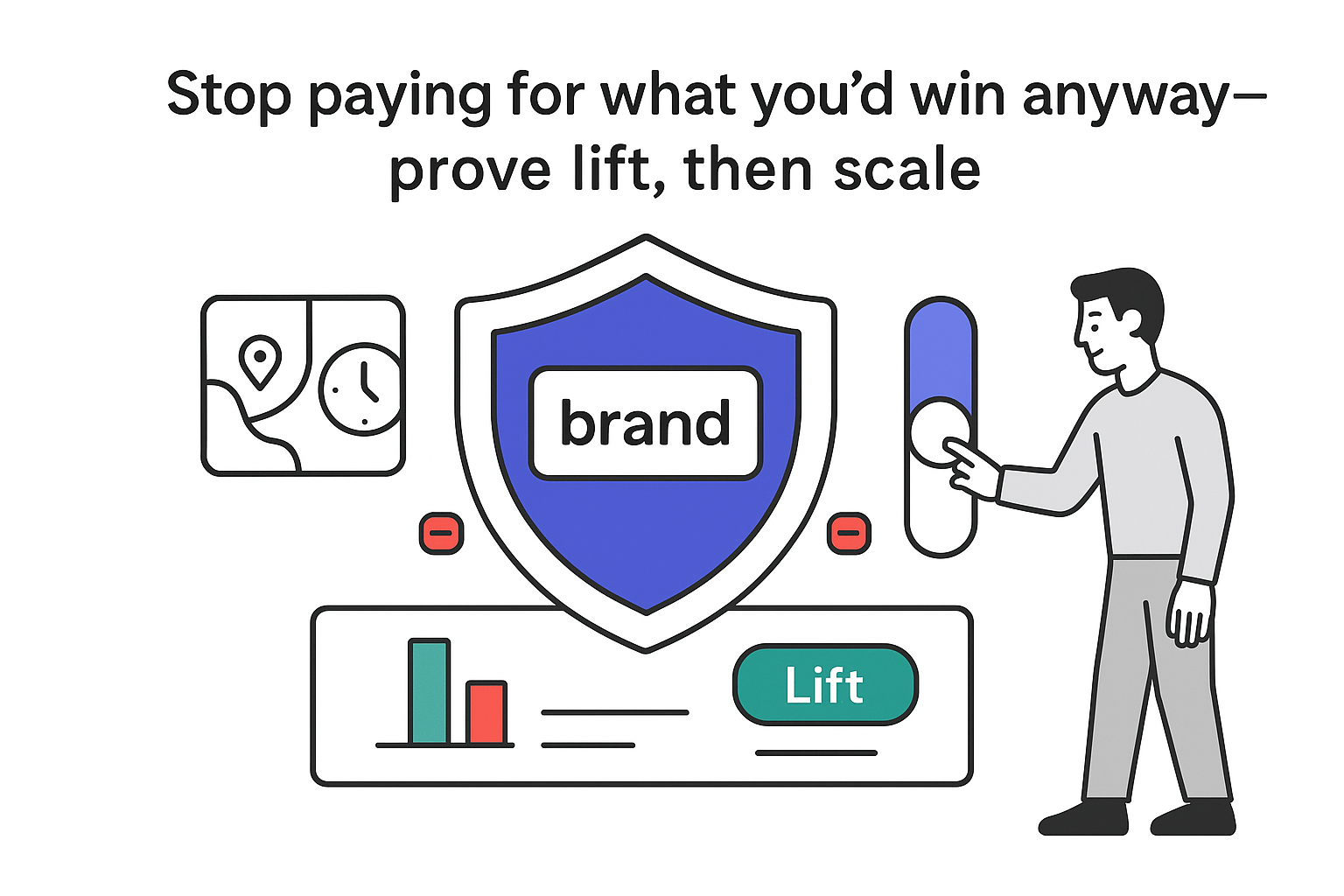

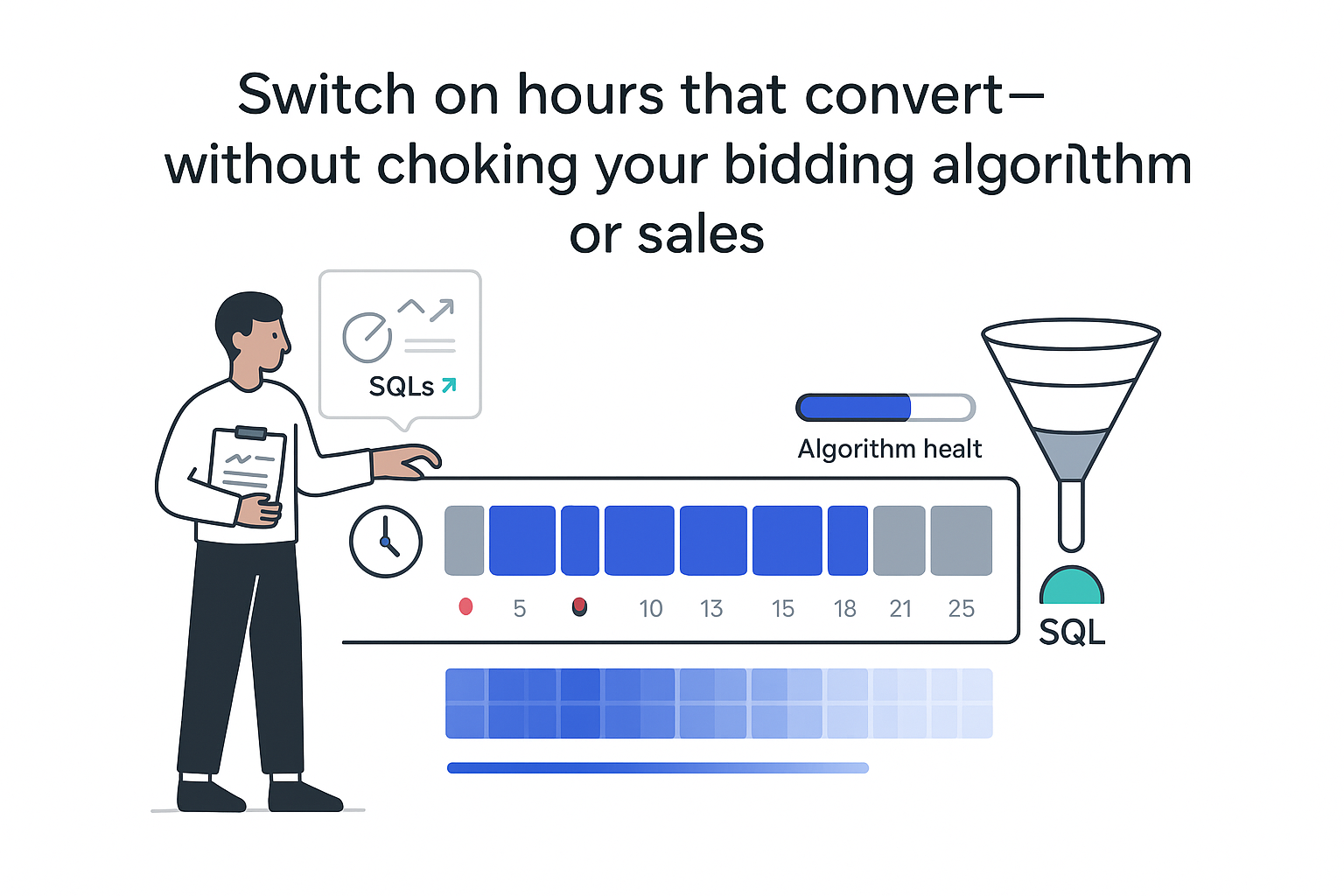
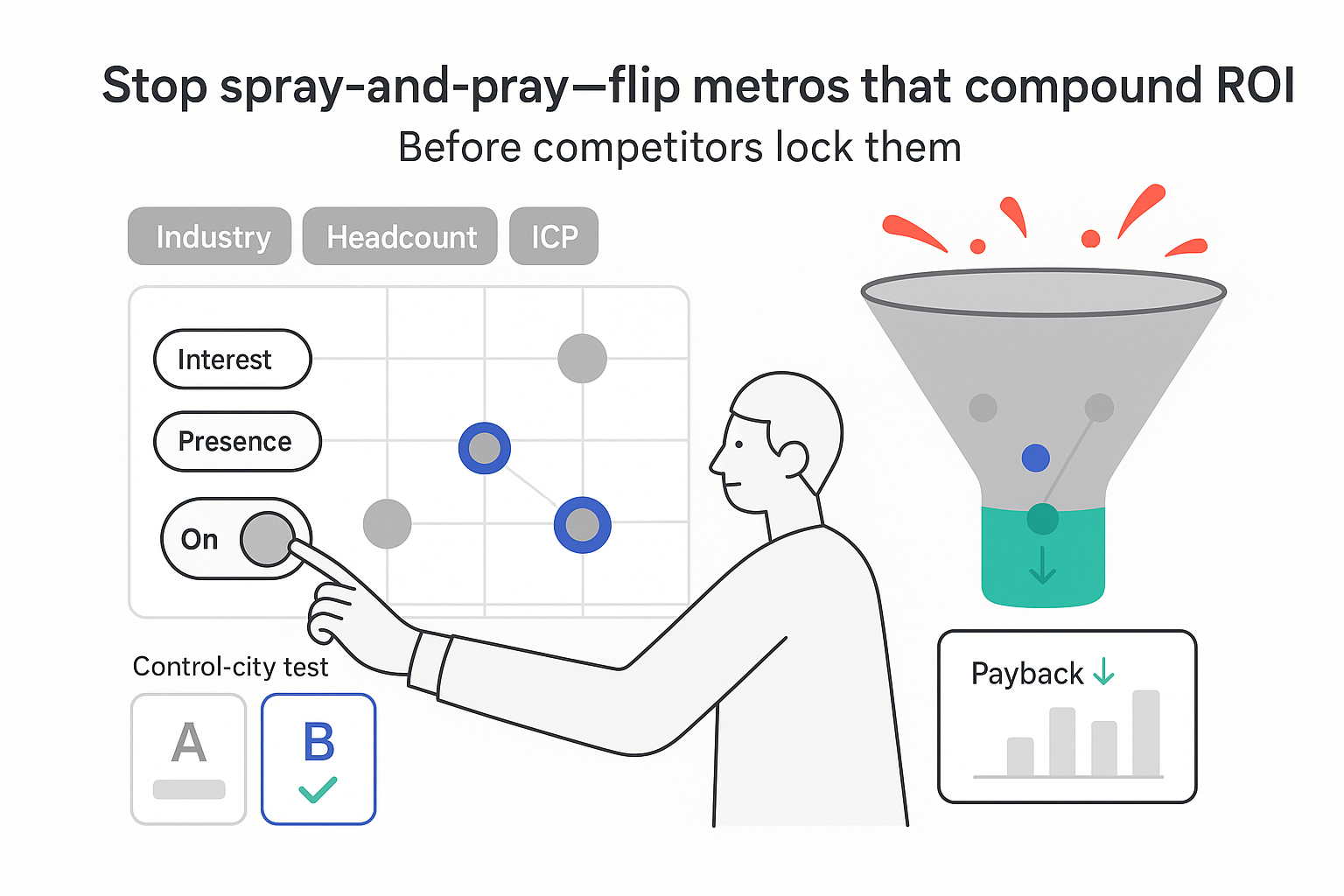
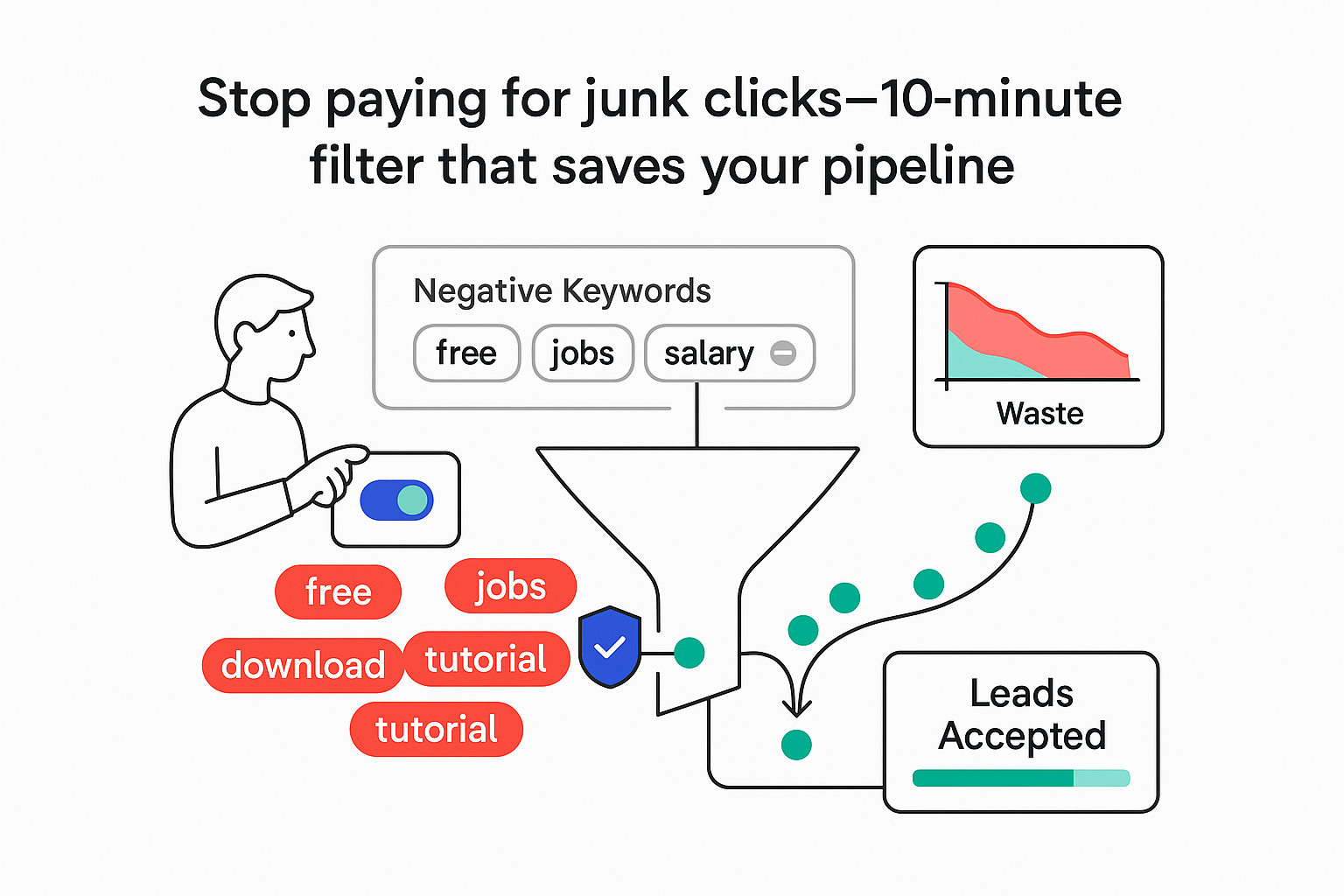
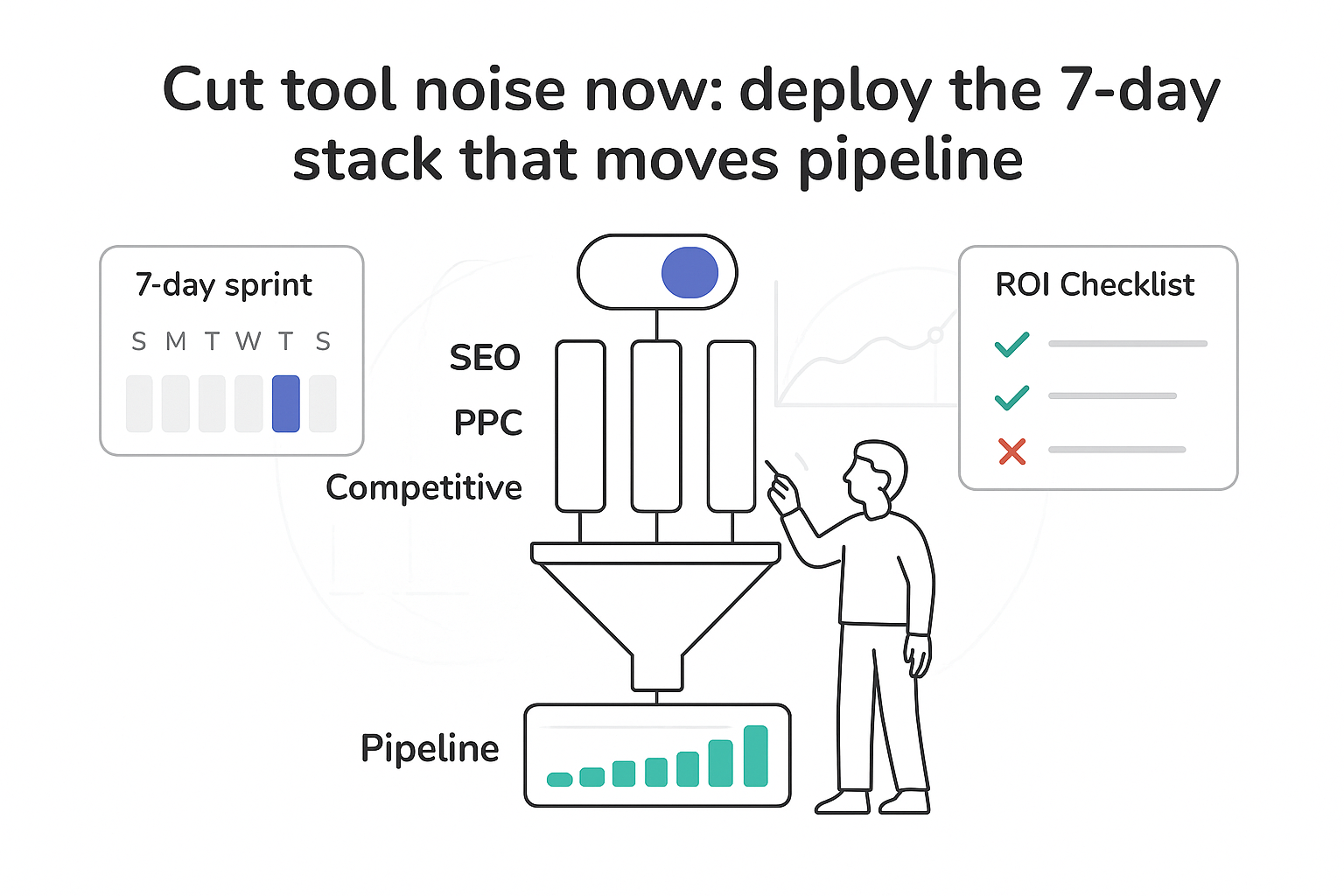
.svg)